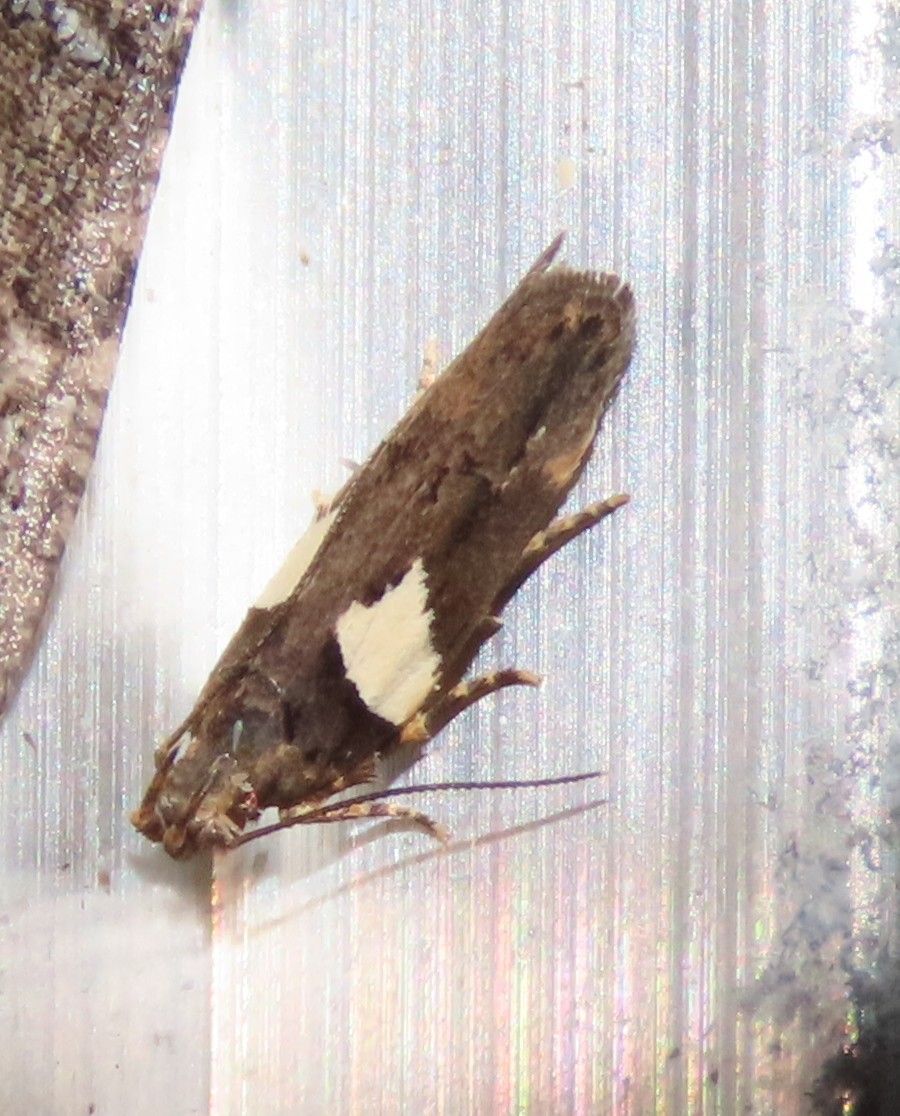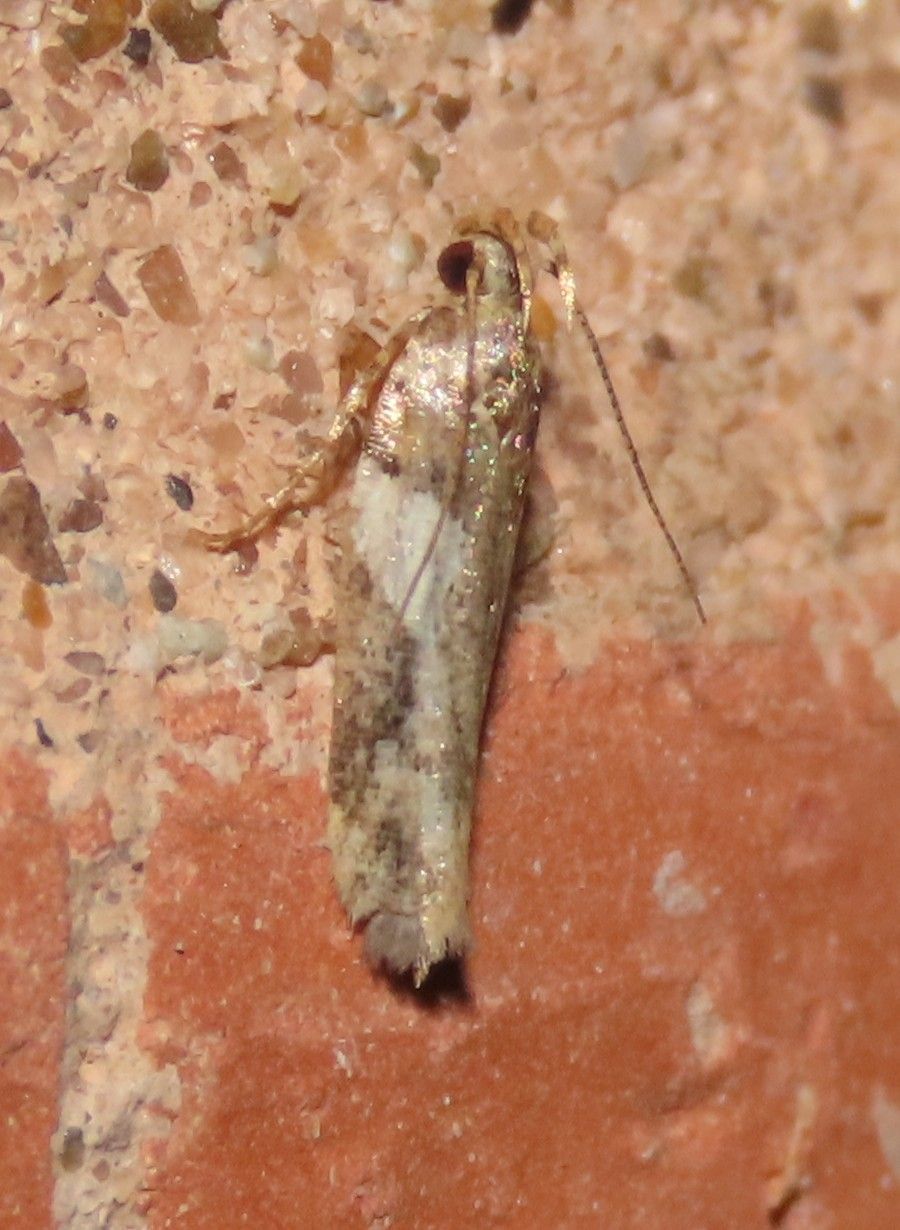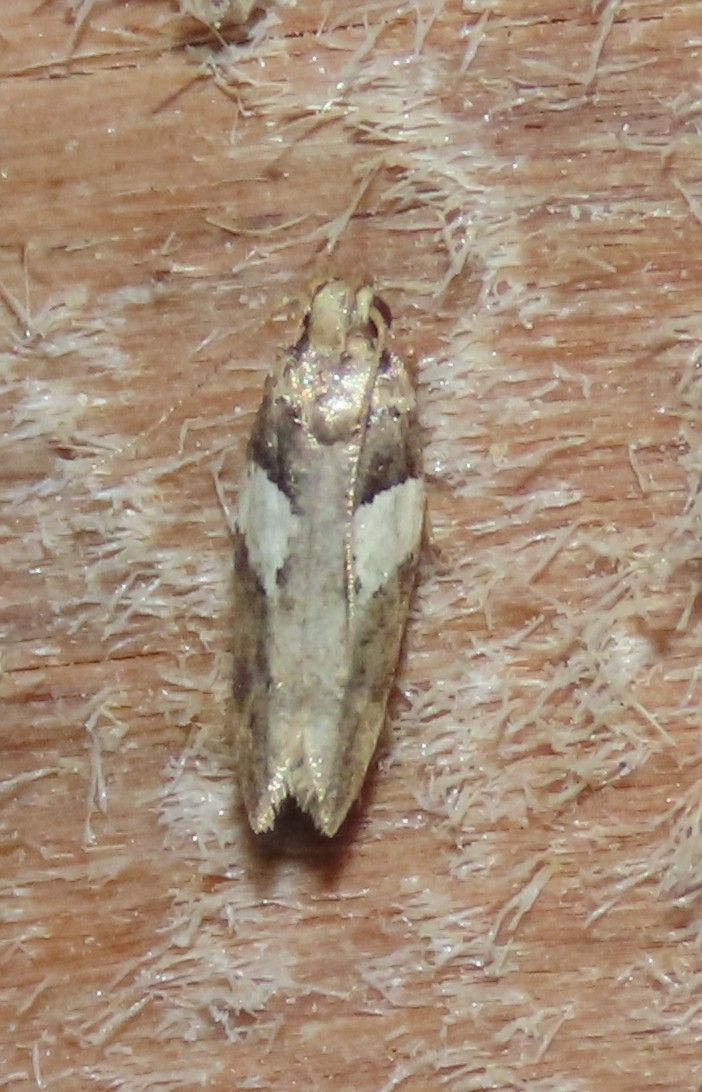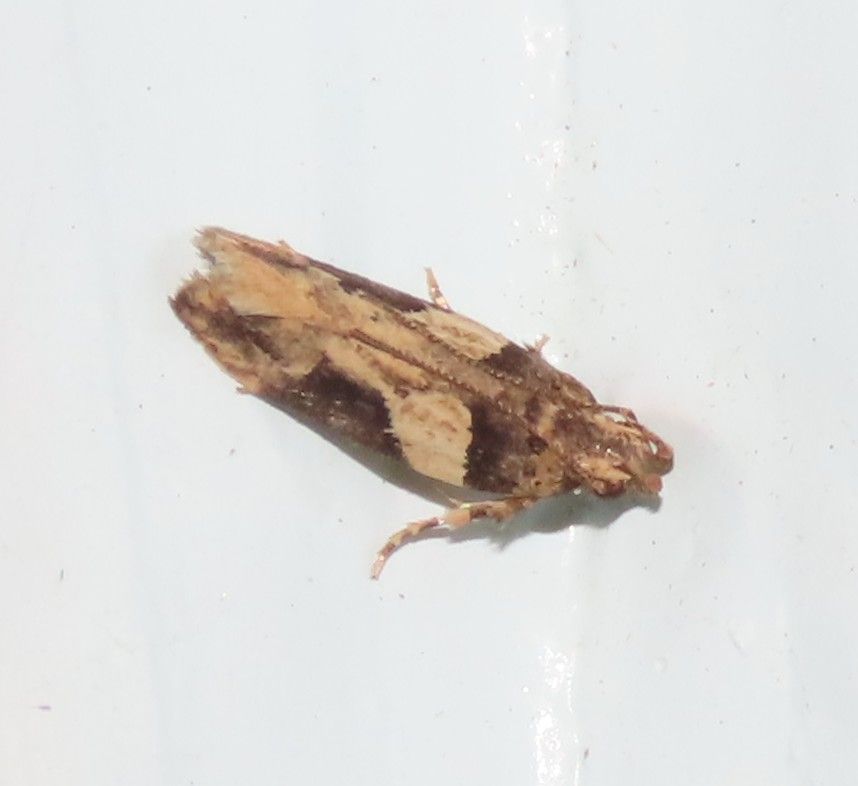Acacia Webworm (Friseria acaciella)
A very small, dark moth with an obvious square-shaped white patch on the forewing. From above these patches appear to angle down towards the back. Some individuals can have a pale back, or appear very pale overall, but the white patch is still apparent. Recorded year-round.

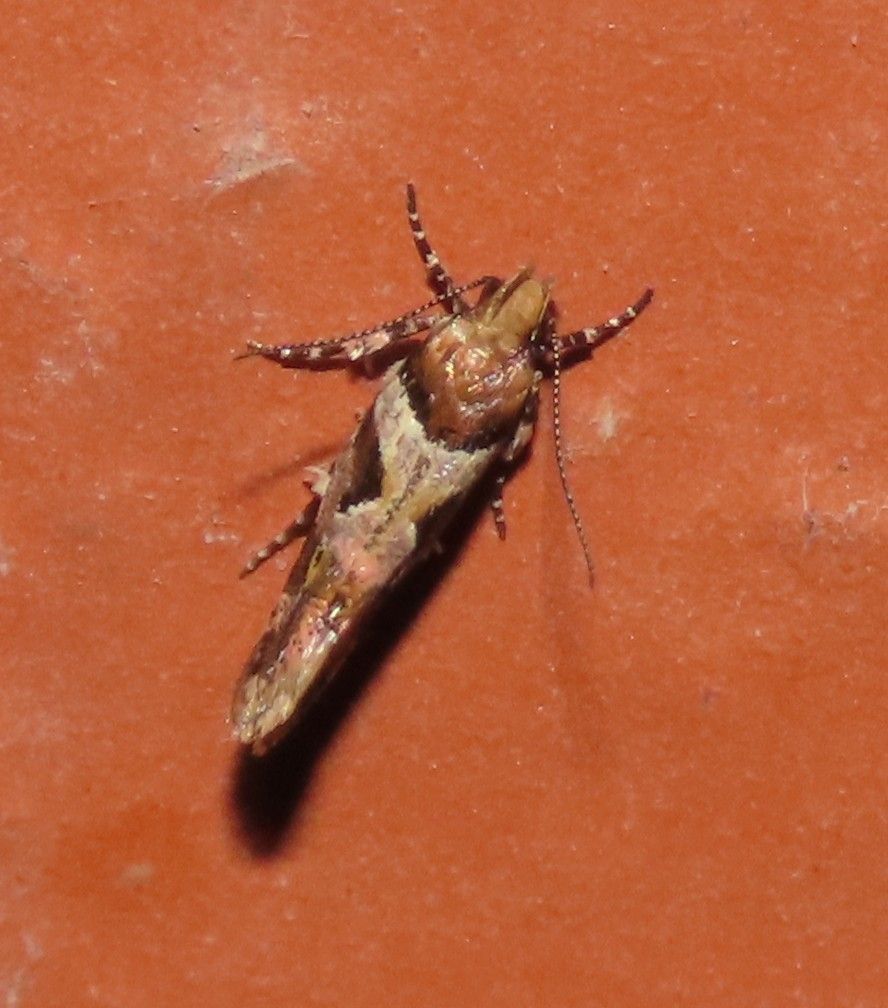
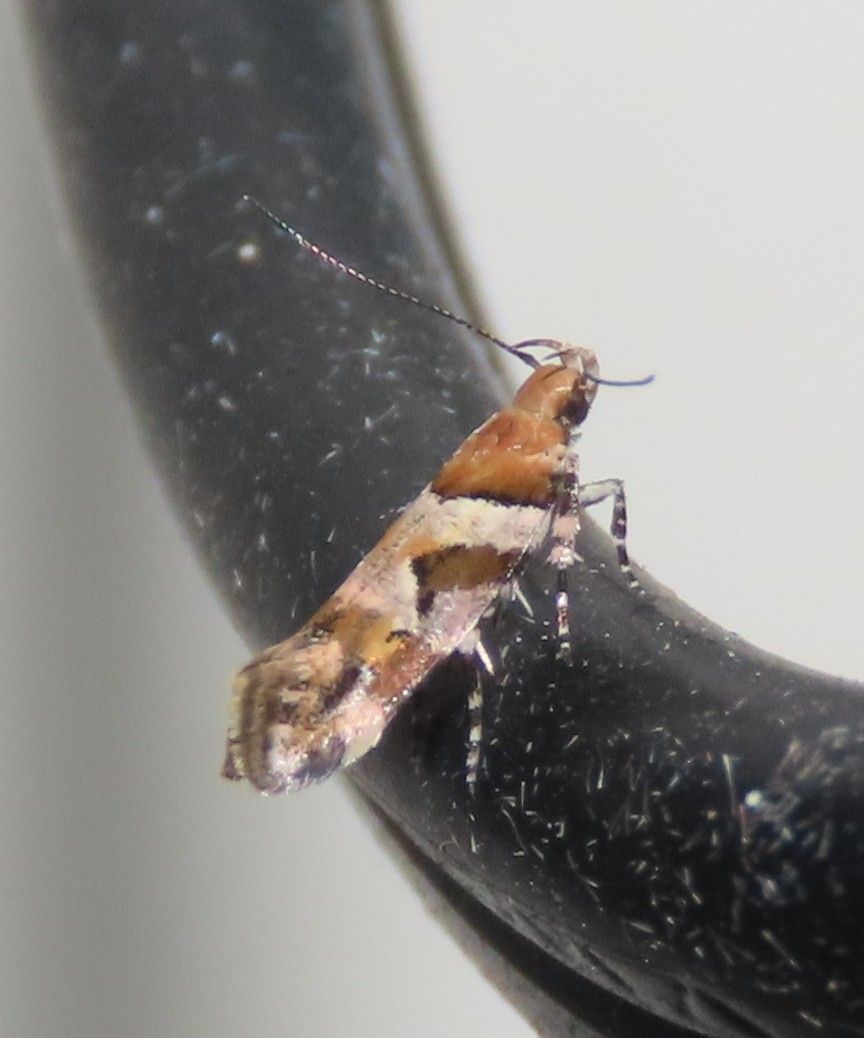
Pink-washed Aristotelia (Aristotelia roseosuffusella)
An extremely tiny micromoth. This is a "best guess" ID, as aristotelias can be extremely variable, and even the experts are sometimes hesitant to go beyond genus level when assigning a name to an image! Recorded July - January.

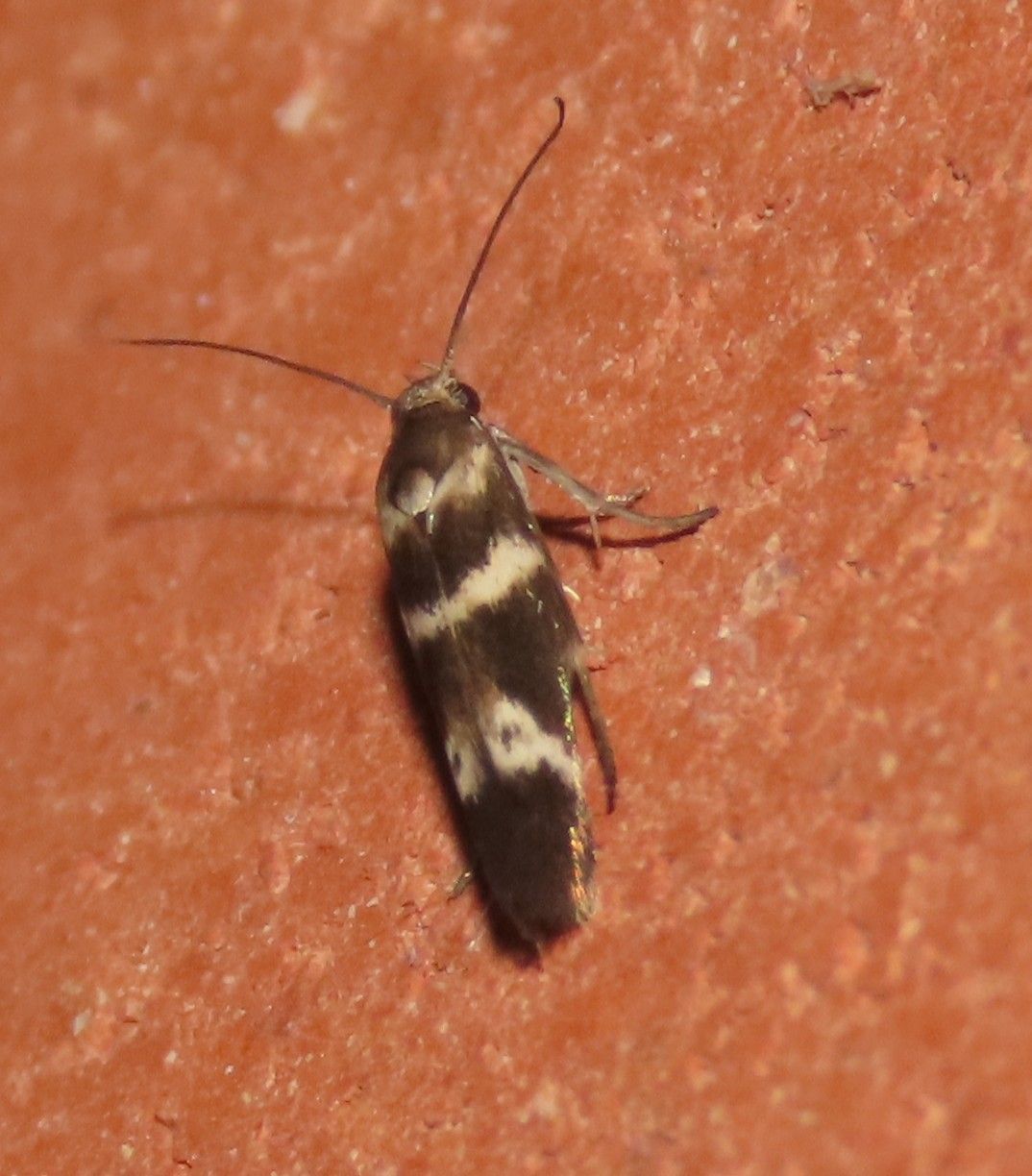
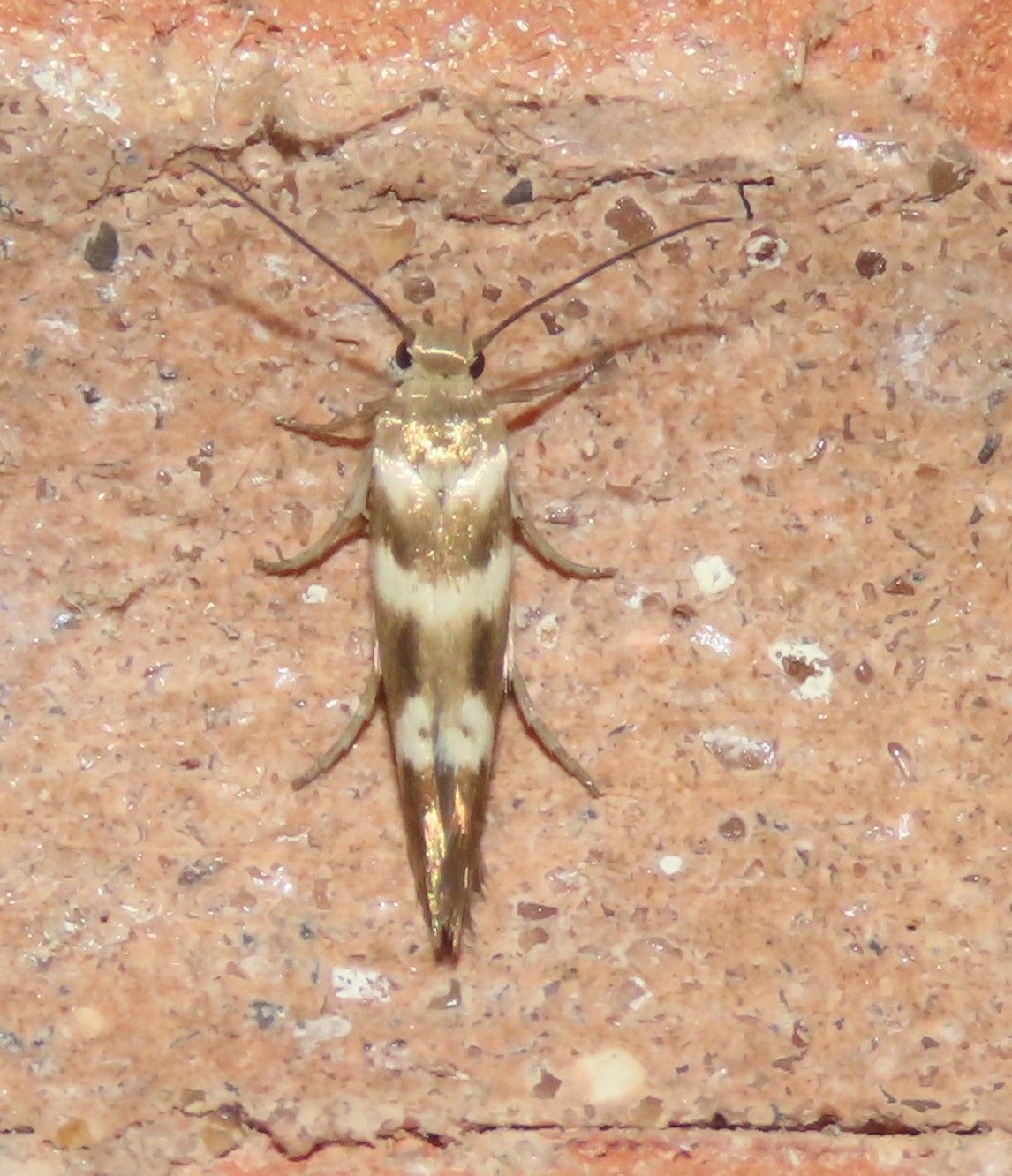
Banded Scythris (Scythris trivinctella)
A member of the casebearer group of micromoths, this moth is easy to identify with its blackish-bronze body with three white bands across the wings. Recorded August - November.

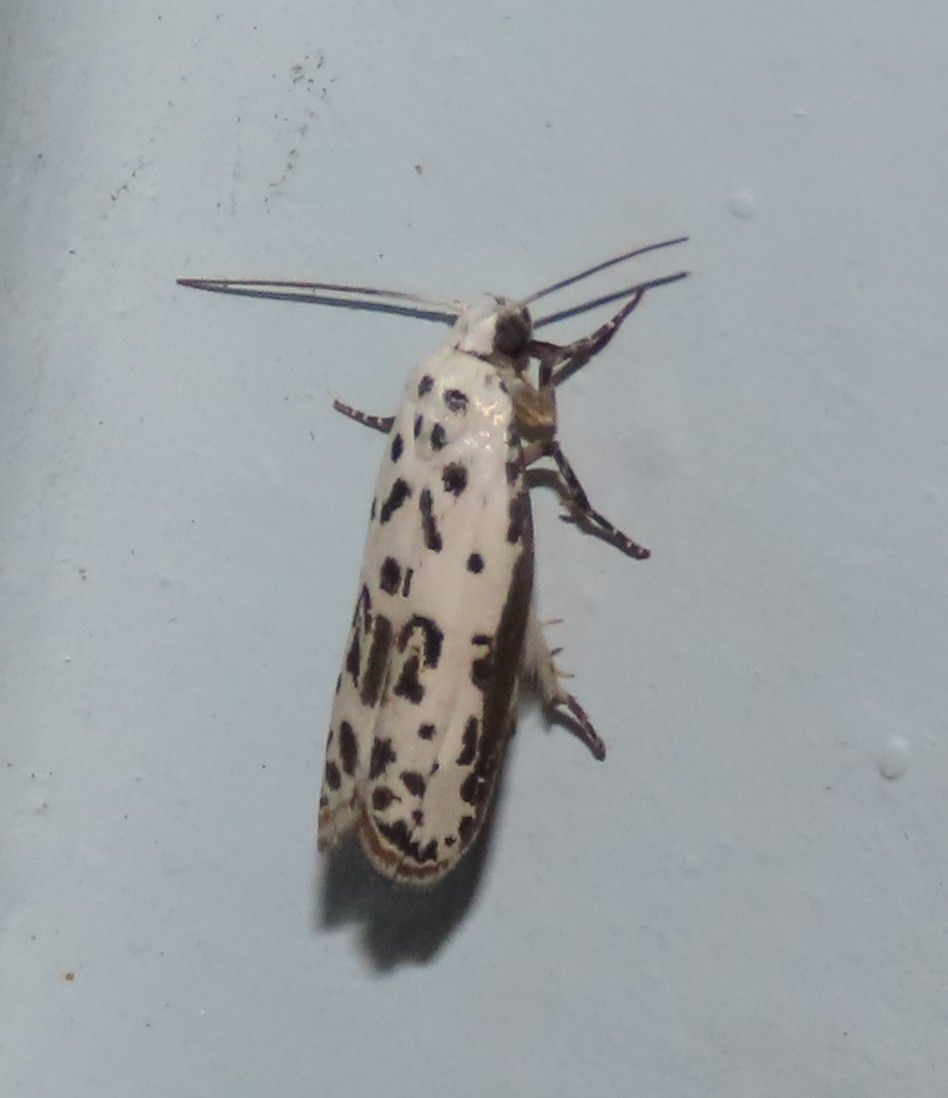
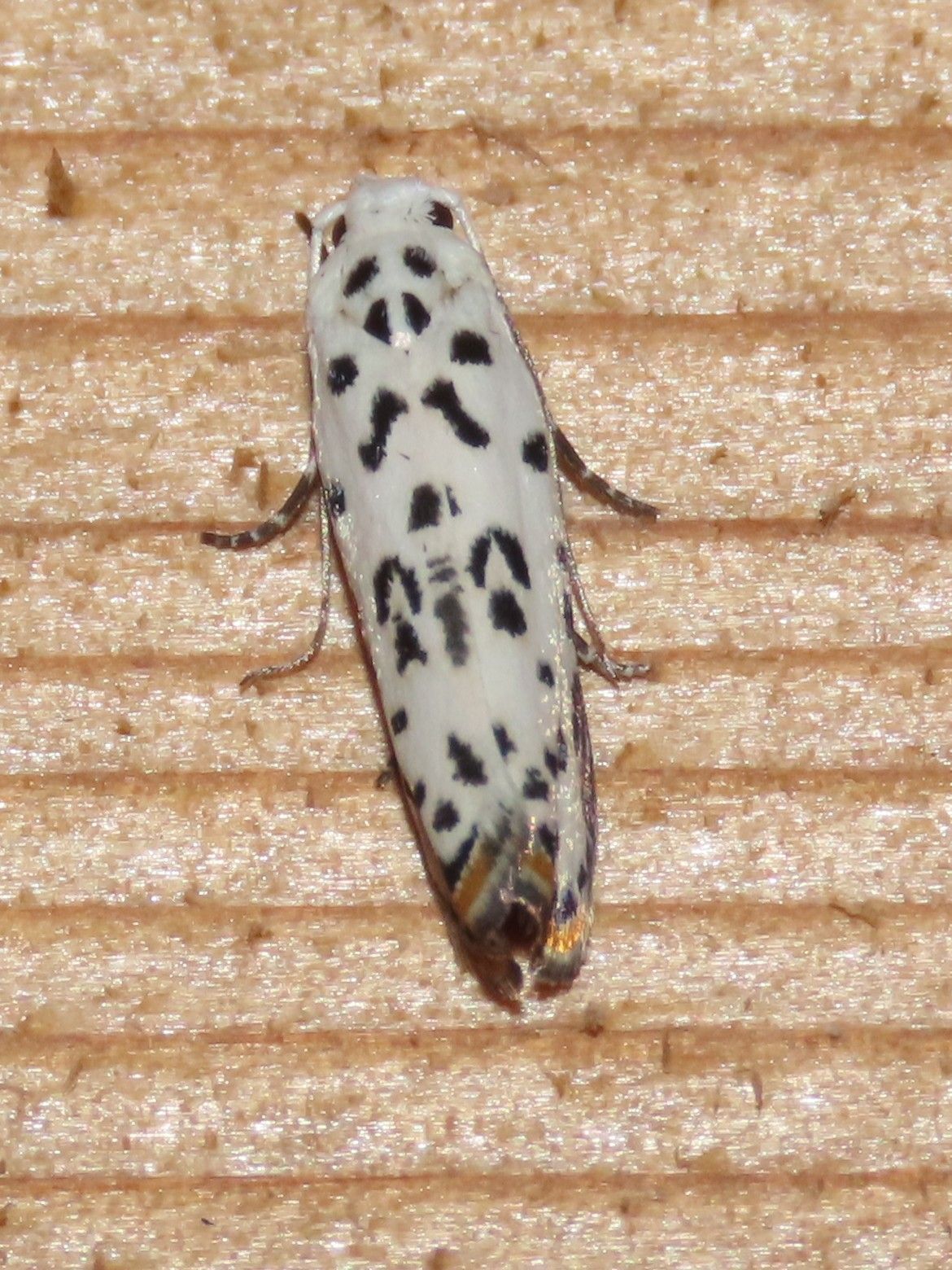

Bitten Ethmia (Ethmia bittenella)
White with black spots, this moth is easily identified by the expressive "clown face" on its back. Some individuals can be very worn (right) and thus hard to tell from other spotted ethmias. Recorded year-round, but less common in winter.


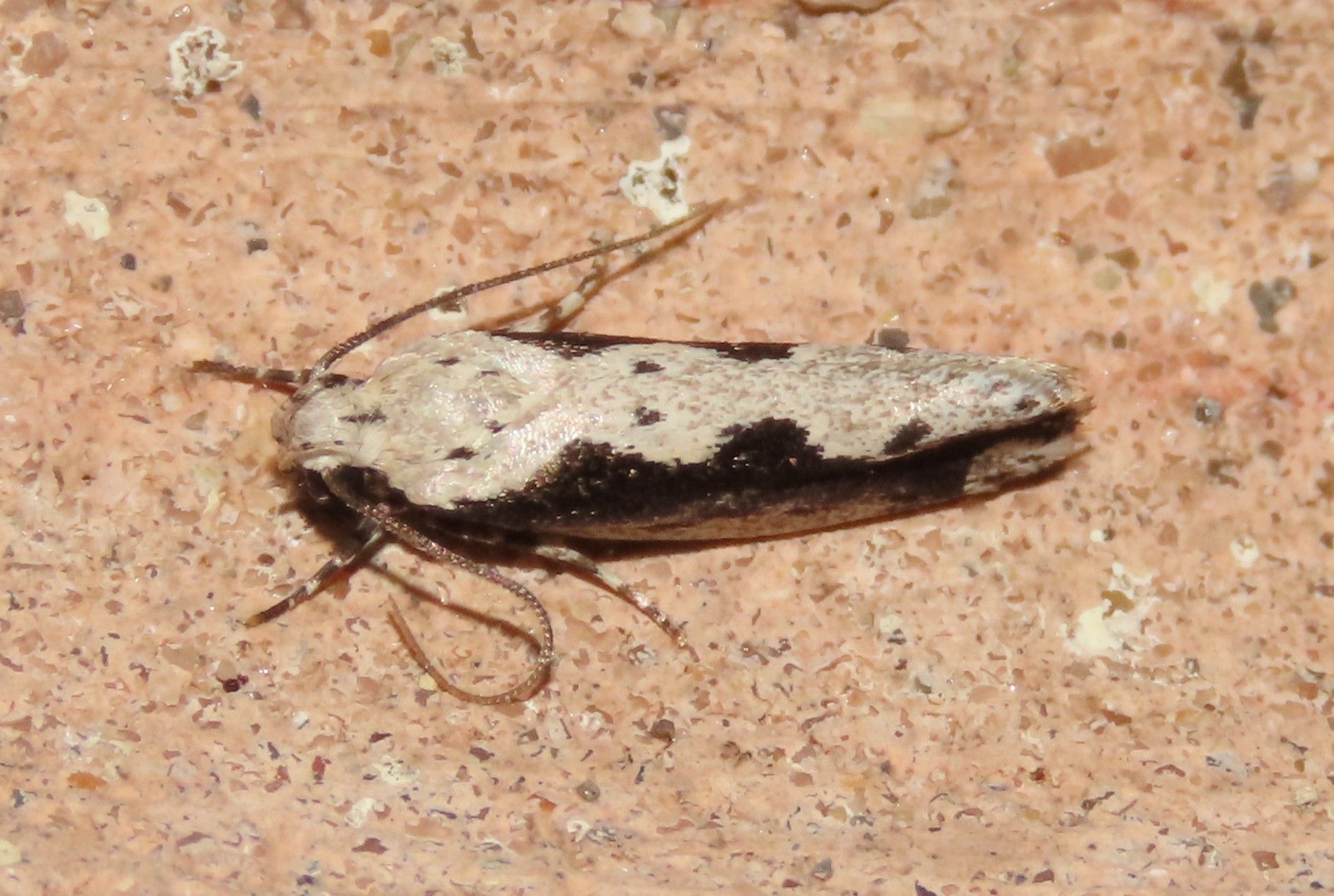
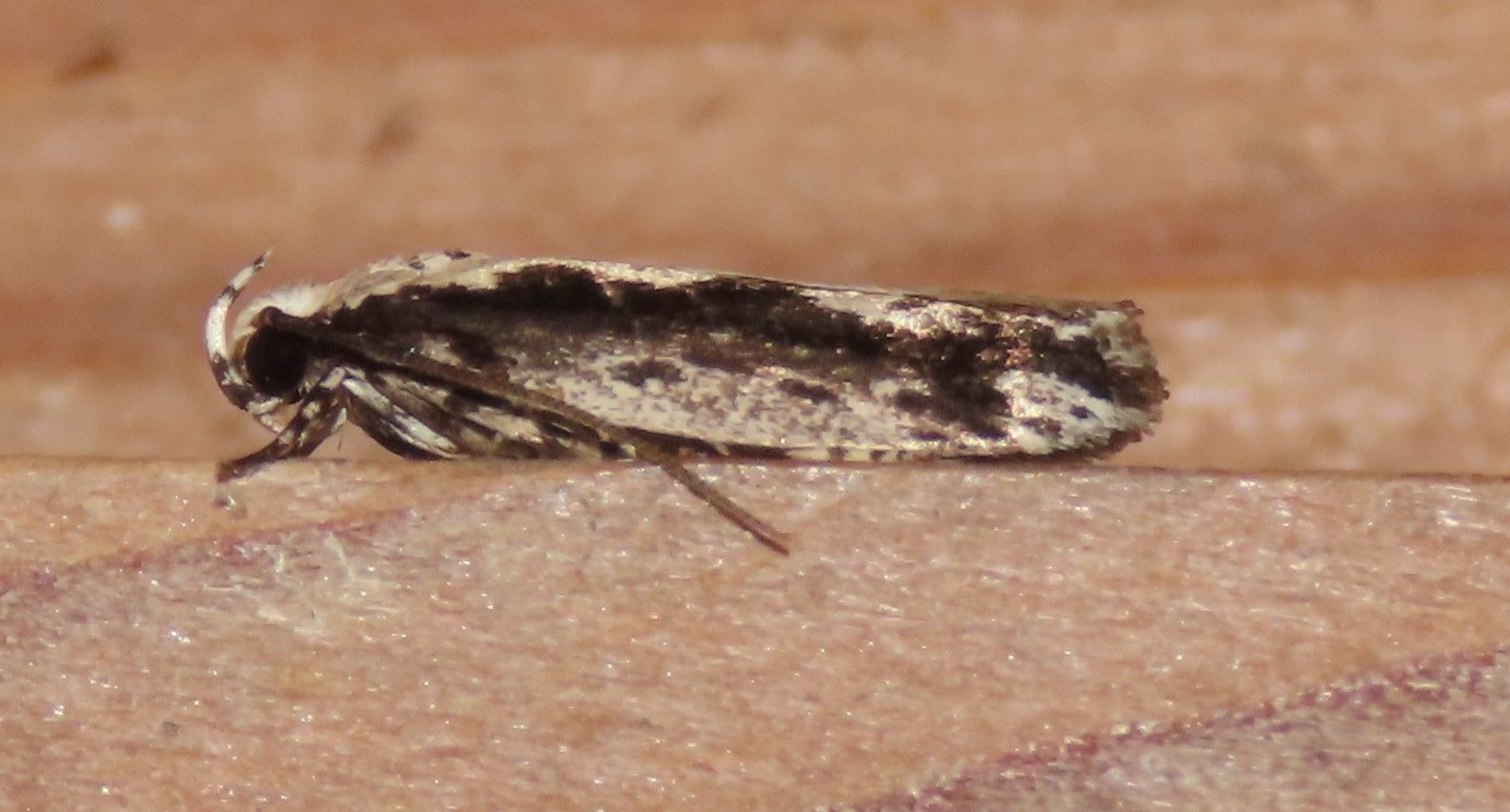
Half-shadowed Ethmia (Ethmia semiombra)
There are several "skunk-patterned" micromoths, but this one shows a rather brindled off-white back, and a grayish "shadow" on the leading edge of the forewing. Note that there's a separation between the "shadow" and the pale spot on the apex of the forewing, which helps to separate it from the Bold-streaked Ethmia (Ethmia trifurcella). Recorded March-October.

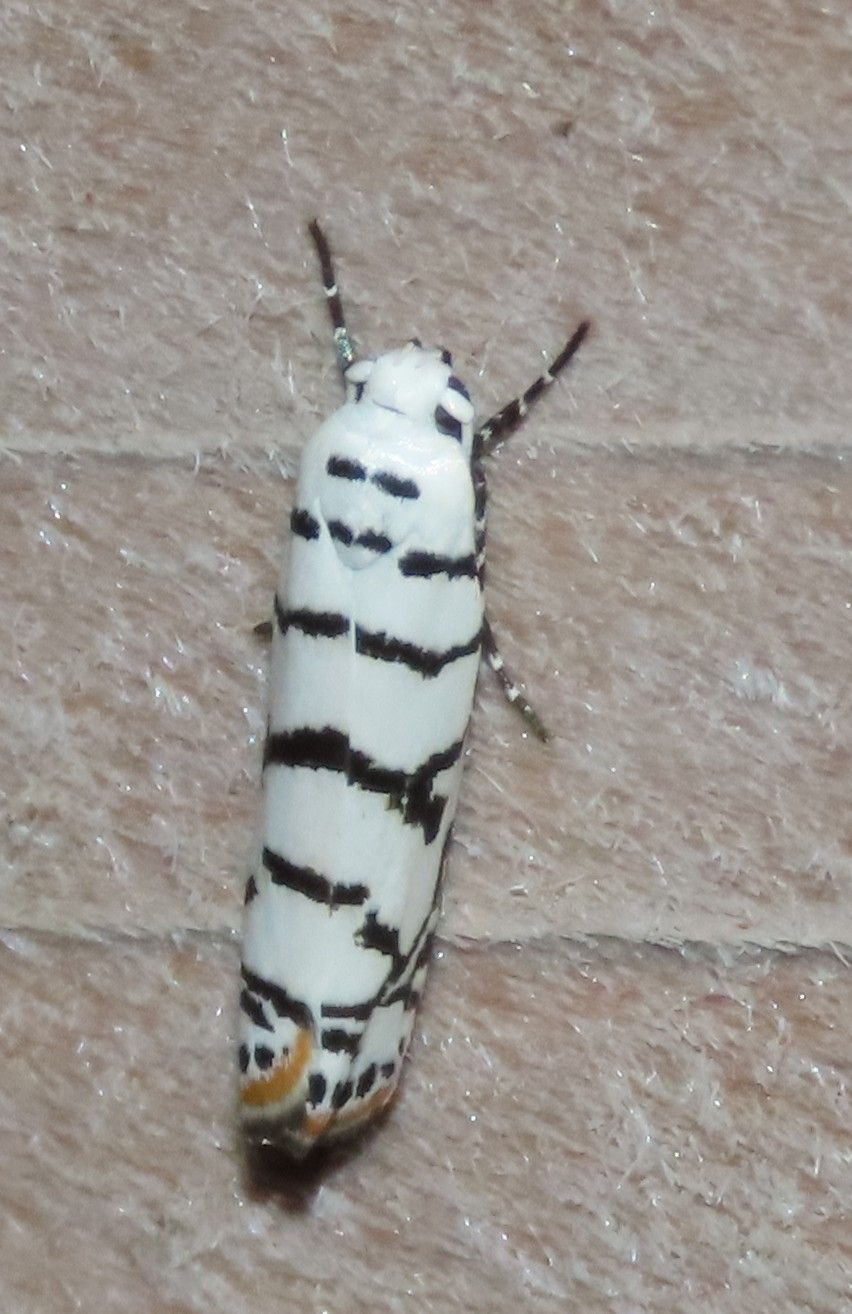
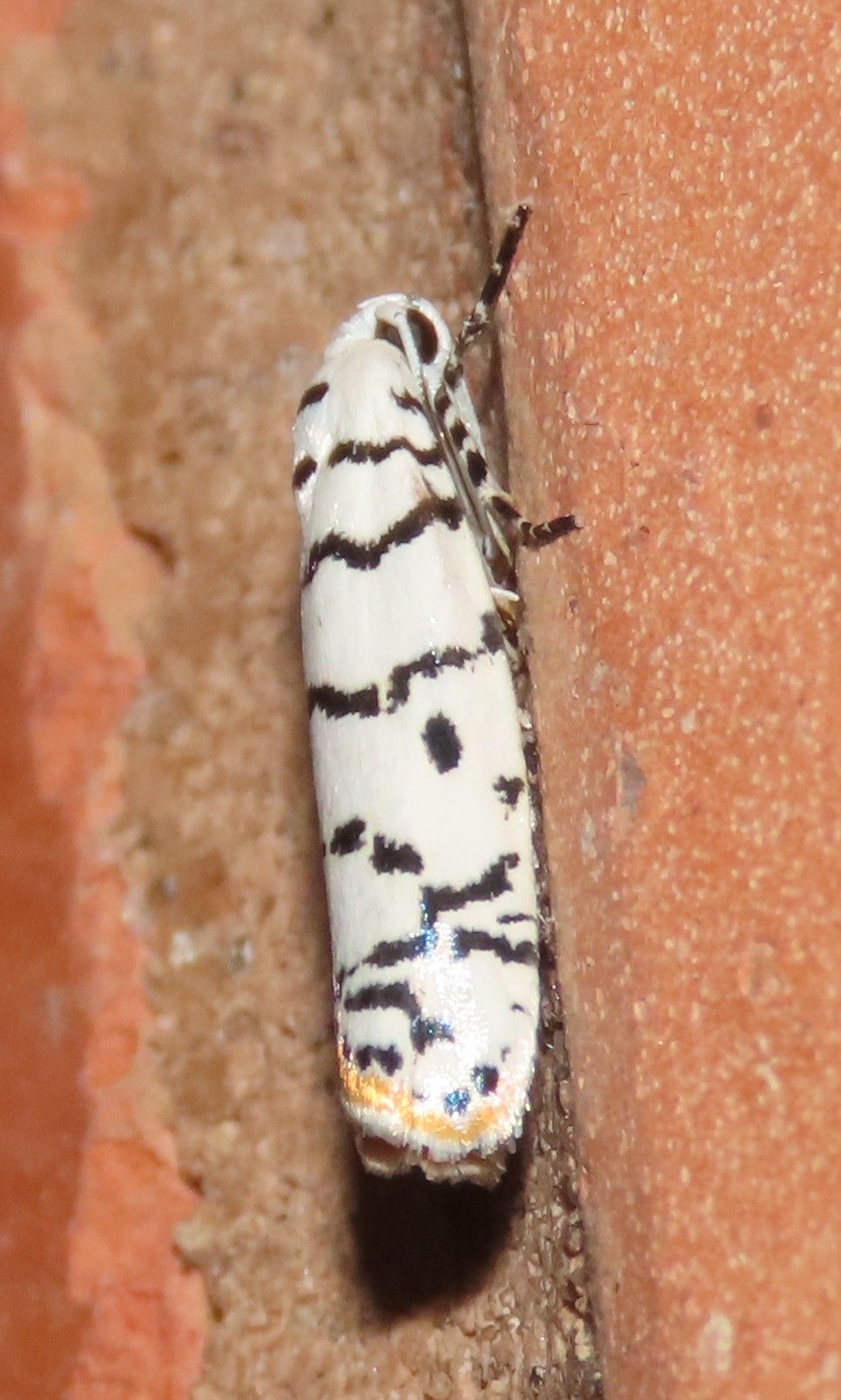
Ladder-backed Ethmia (Ethmia delliella)
Unmistakable: white with black bands and an orange terminal line bordered with dots. Recorded March-November.


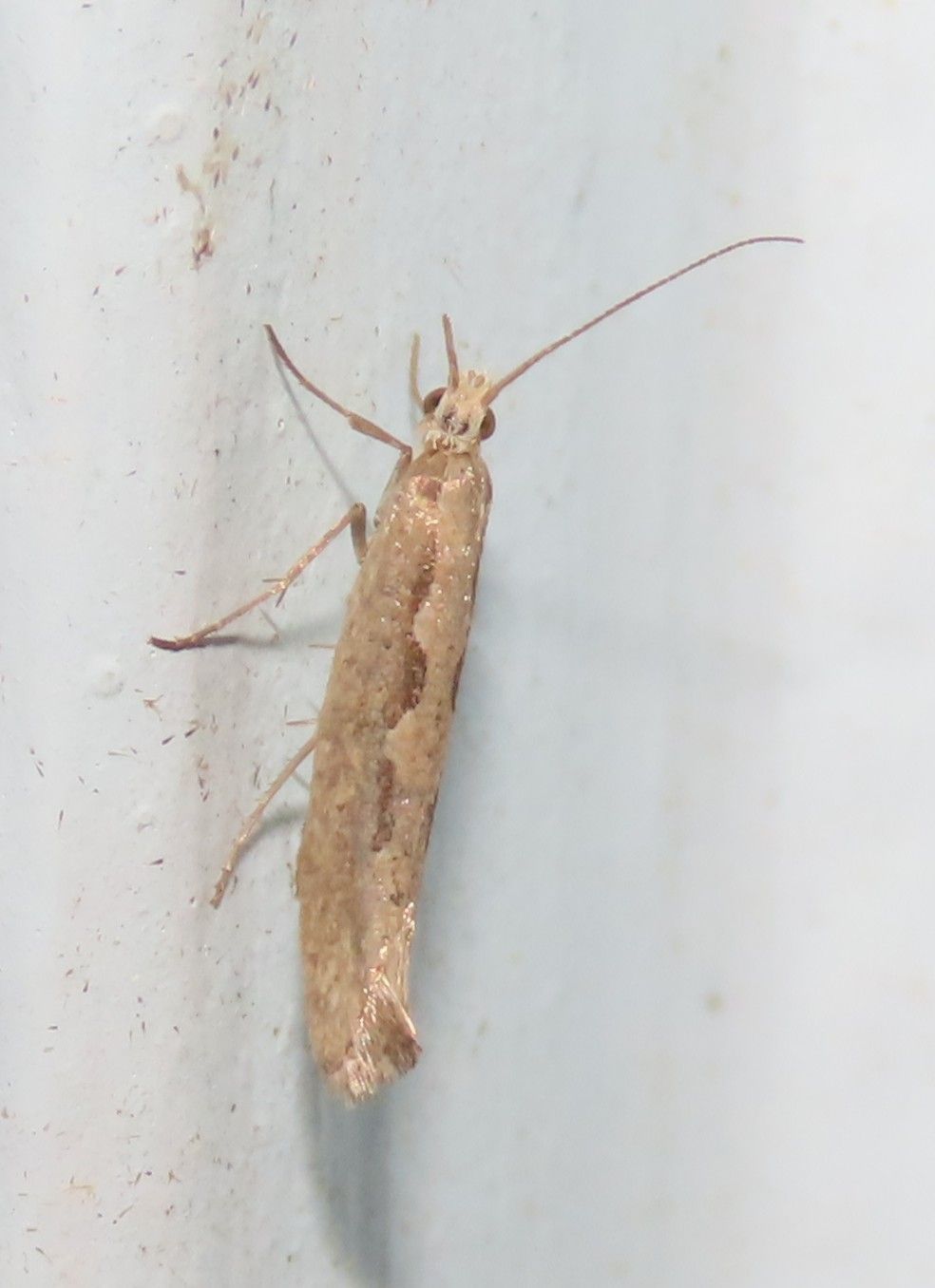
Diamondback Moth (Plutella xylostella)
Another "skunk-patterned" moth, this bug is smaller than the ethmias, and holds his antennae out straight in front of him, adding to the attenuated look. Males (left) are dark brown to blackish, while females (right) are duller and less contrasting. Recorded year-round, but less common in summer.

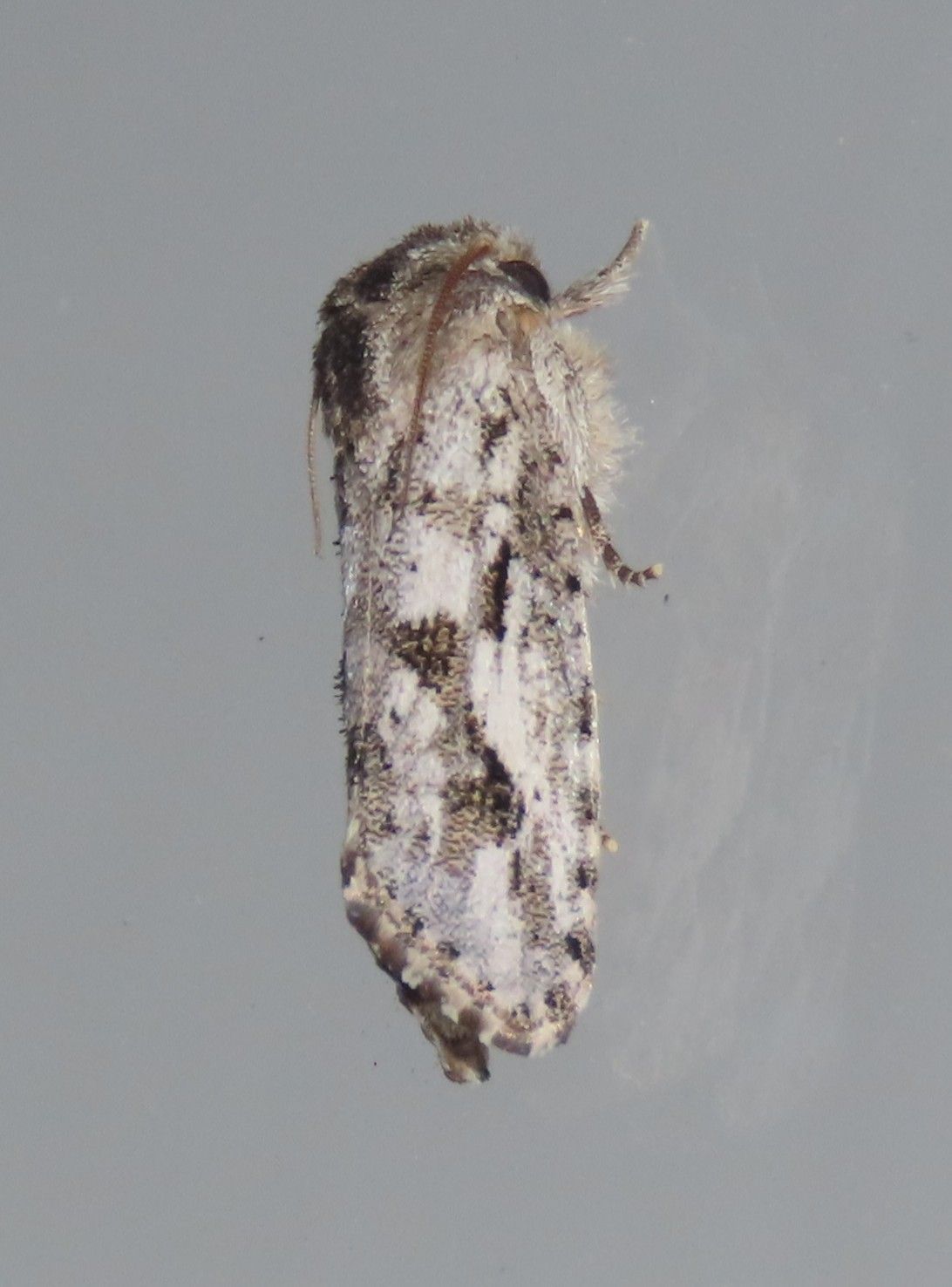

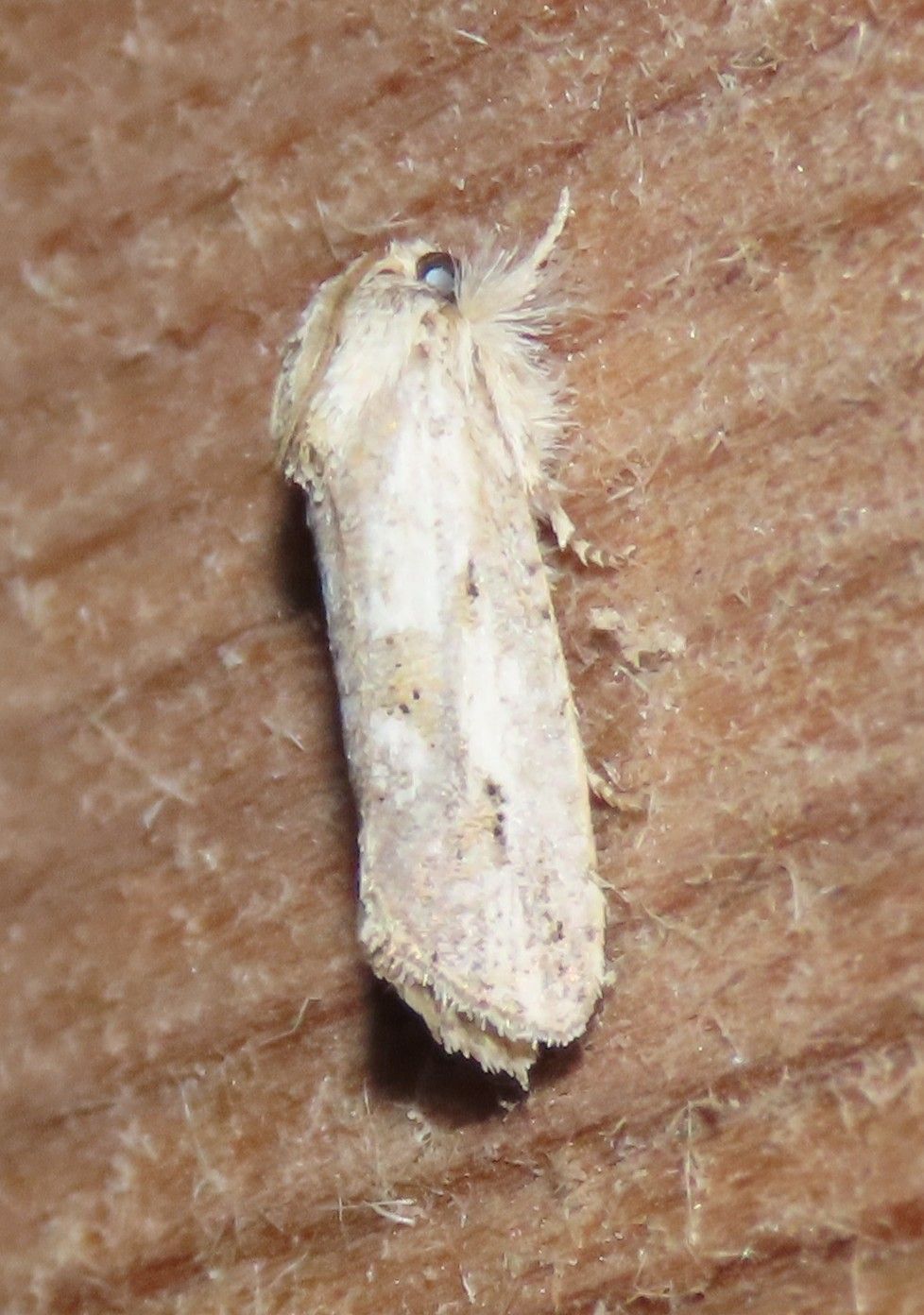
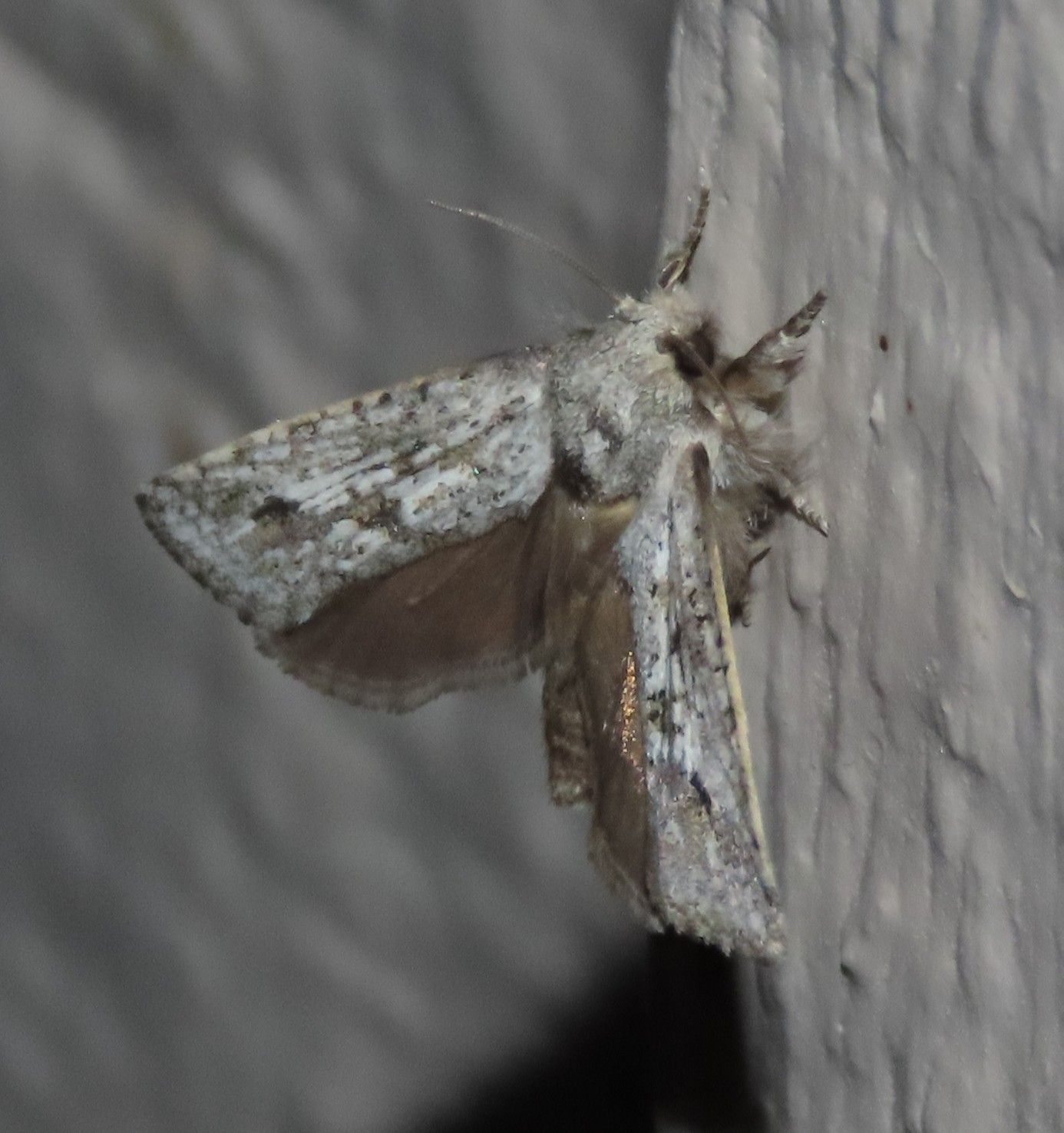
Gray Grass Tubeworm (Acrolophus griseus capitatus)
These pale, dark-splotched tubeworms went unidentified for many months until Paul Dennehy from BugGuide was able to nail them down as the capitatus race of the Gray Grass Tubeworm, which is very different from the nominate race! Even these bugs can be quite variable, from strongly marked (left) to quite pale! Capitatus is restricted to central and southern Texas, whereas the nominate race occurs in the southwest US. Recorded March-October.


